Strategies and Tactics
STRATEGY 4.1: Engage with UM and community partners.
- TACTIC 4.1.1 -- Work with regional memory organizations to include content in the Digital Public Library of America (DPLA) Florida Network.
TACTIC 4.1.1
Demonstrates a commitment to promoting education, fostering partnerships, encouraging innovation, and preserving cultural heritage. Additionally, it underscores the importance of collaboration among cultural institutions to digitize and share historical materials, enriching educational experiences and fostering a greater appreciation for Florida's diverse heritage.
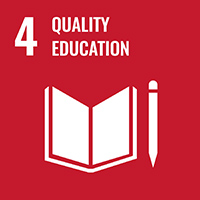 |
Goal 4: Quality Education Including content from regional memory organizations in the DPLA Florida Network enhances access to educational resources and promotes lifelong learning. By digitizing and sharing historical materials, such as documents, photographs, and manuscripts, the initiative enriches educational experiences and fosters a deeper understanding of Florida's cultural heritage and history. |
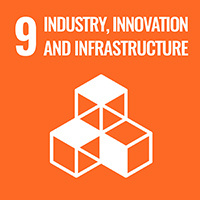 |
Goal 9: Industry, Innovation, and Infrastructure Contributing content to the DPLA Florida Network reflects innovation in digital infrastructure and cultural heritage preservation. It aligns with the goal of promoting innovation and the development of efficient mechanisms for digitizing, cataloging, and sharing cultural heritage materials, thereby preserving Florida's history, and making it more accessible to present and future generations. |
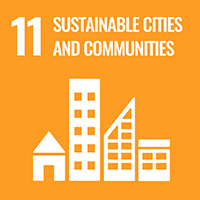 |
Goal 11: Sustainable Cities and Communities Working with regional memory organizations to include content in the DPLA Florida Network contributes to building sustainable and inclusive communities by preserving and promoting cultural heritage. By digitizing and sharing materials that document Florida's history, culture, and identity, the initiative fosters community pride, strengthens social cohesion, and promotes cultural tourism and economic development. |
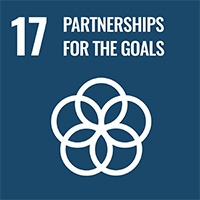 |
Goal 17: Partnerships for the Goals By working together, libraries, archives, museums, and other cultural institutions can leverage their collective resources and expertise to digitize, preserve, and disseminate cultural heritage materials, promoting broader access and engagement with Florida's rich history and cultural diversity. |
STRATEGY 4.2: Host public lectures, colloquia, and dialogs on issues of importance, including topics addressing diversity, equity, accessibility, and inclusion.
- TACTIC 4.2.1 -- Work with Facilities to ensure timely completion of the Kislak Center and promote the facility as a welcoming venue for University schools, colleges, centers, and institutes community outreach programs.
- TACTIC 4.2.2 -- Develop a land acknowledgement statement to be made at the start of each public program.
- TACTIC 4.2.3 -- Establish a Libraries Indigenous Studies Group (LISG) to celebrate and elevate contemporary Indigenous experiences and history through multiple avenues, like developing new research guides and hosting public events related to their charter.
TACTIC 4.2.1
Demonstrates a commitment to promoting education, fostering partnerships, enhancing infrastructure, and building inclusive communities. Additionally, it underscores the importance of collaboration among diverse stakeholders to create welcoming and accessible spaces that support community engagement, cultural enrichment, and educational excellence.
 |
Goal 4: Quality Education Completing the Kislak Center and promoting it as a venue for community outreach programs enhances quality education by providing a modern and accessible space for educational activities, events, and exhibitions. By offering a welcoming environment for learning and engagement, the Center facilitates knowledge sharing, cultural enrichment, and lifelong learning opportunities for students, faculty, and the broader community. |
 |
Goal 9: Industry, Innovation, and Infrastructure Aligns with the goal of promoting innovation and the development of modern, accessible facilities that support community engagement, cultural exchange, and lifelong learning opportunities for all. |
 |
Goal 11: Sustainable Cities and Communities Promoting the Kislak Center as a welcoming venue for community outreach programs contributes to building sustainable and inclusive communities within the university and beyond. By providing a space for cultural and educational activities, the Center fosters social cohesion, civic engagement, and community empowerment, thereby contributing to the vitality and resilience of the local community. |
 |
Goal 17: Partnerships for the Goals By working together, the library, Facilities, schools, colleges, centers, and institutes can leverage their collective resources and expertise to support the completion and promotion of the Kislak Center as a hub for community outreach programs, cultural events, and educational initiatives. |
TACTIC 4.2.2
Demonstrates a commitment to promoting cultural diversity, fostering inclusivity, and building respectful partnerships. Additionally, it underscores the importance of acknowledging and honoring Indigenous peoples' contributions and histories as an essential step toward achieving sustainable development and social justice.
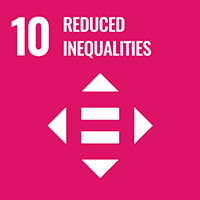 |
Goal 10: Reduced Inequalities A land acknowledgment statement acknowledges the Indigenous peoples who have historically lived on and cared for the land where events take place. By recognizing the contributions and resilience of Indigenous communities, the statement promotes inclusivity and respect for diverse cultures, contributing to the goal of reducing inequalities and promoting social cohesion. |
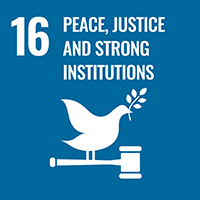 |
Goal 16: Peace, Justice, and Strong Institutions Making a land acknowledgment statement fosters a culture of respect, reconciliation, and justice by acknowledging the historical injustices and dispossession experienced by Indigenous peoples. By acknowledging the truth of past and ongoing colonization, the statement supports efforts to build more inclusive and equitable societies based on mutual understanding and respect for human rights. |
 |
Goal 17: Partnerships for the Goals By collaborating with Indigenous communities, local stakeholders, and cultural organizations, institutions can create meaningful and respectful statements that honor Indigenous histories, languages, and cultures, fostering partnerships based on mutual respect and understanding. |
TACTIC 4.2.3
Demonstrates a commitment to promoting cultural diversity, fostering education, advancing social inclusion, and building partnerships for sustainable development. Additionally, it underscores the importance of recognizing and celebrating Indigenous cultures and knowledge as essential components of a more inclusive and equitable society.
 |
Goal 4: Quality Education The LISG contributes to quality education by developing research guides and hosting public events that promote understanding and appreciation of Indigenous cultures, histories, and contemporary experiences. By providing educational resources and opportunities for learning, the initiative enhances awareness and fosters cultural sensitivity among students, faculty, and the broader community. |
 |
Goal 10: Reduced Inequalities Establishing the LISG supports efforts to reduce inequalities by amplifying Indigenous voices and perspectives within the academic community. By creating a platform for Indigenous knowledge and scholarship, the group promotes greater recognition of Indigenous contributions to society and advocates for greater inclusion and representation of Indigenous perspectives in educational and cultural spaces. |
 |
Goal 11: Sustainable Cities and Communities Establishing the LISG contributes to building sustainable and inclusive communities by celebrating Indigenous cultures, histories, and contemporary experiences. By creating opportunities for cultural expression and dialogue, the group fosters a sense of belonging and pride among Indigenous peoples while promoting greater understanding and solidarity among community members. |
 |
Goal 17: Partnerships for the Goals The LISG fosters partnerships for sustainable development by collaborating with Indigenous communities, scholars, and cultural organizations to develop inclusive and respectful programming. By working together, the group can leverage diverse perspectives and expertise to promote cultural exchange, foster dialogue, and build bridges between Indigenous and non-Indigenous communities. |
STRATEGY 4.3: Optimize use of library spaces for research and creativity.
- TACTIC 4.3.1 -- Host programs in new (enclosed) Flexible Learning Environment in Learning Commons (completed portion), including student-driven programs.
- TACTIC 4.3.2 -- Intentional Design of Labels and Signage for Accessibility.
TACTIC 4.3.1
Demonstrates a commitment to promoting quality education, fostering innovation, promoting inclusivity, and building partnerships for sustainable development. Additionally, it underscores the importance of creating flexible and inclusive learning environments that empower students to actively participate in their educational journey and develop the skills and competencies needed for success in a rapidly changing world.
 |
Goal 4: Quality Education Hosting programs in the Flexible Learning Environment enhances quality education by providing students with access to innovative and collaborative learning experiences. By offering a space that supports diverse learning styles and encourages active participation, the initiative promotes student engagement, critical thinking, and skill development, contributing to a more enriching educational experience. |
 |
Goal 9: Industry, Innovation, and Infrastructure The Flexible Learning Environment reflects innovation in educational infrastructure and pedagogy. By incorporating flexible design elements and technology-enabled learning spaces, the initiative aligns with the goal of promoting innovation and building modern, adaptable learning environments that support student-centered approaches to teaching and learning. |
 |
Goal 10: Reduced Inequalities Hosting student-driven programs in the Flexible Learning Environment promotes inclusivity and reduces inequalities by providing all students with opportunities to actively engage in shaping their learning experiences. Empowering students to design and lead programs fosters a sense of ownership and belonging, ensuring that diverse voices and perspectives are represented and valued in the learning process. |
 |
Goal 17: Partnerships for the Goals Collaborating with students and stakeholders to host programs in the Flexible Learning Environment involves partnerships for sustainable development. By working together to co-create and facilitate programs, the initiative fosters collaboration, communication, and shared ownership of learning outcomes, strengthening the relationship between the university and its community, and promoting a culture of lifelong learning and innovation. |
TACTIC 4.3.2
Creates more inclusive environments that benefit everyone, regardless of their abilities or backgrounds.
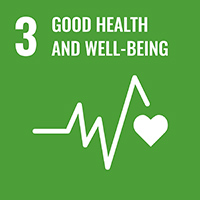 |
Goal 3: Good Health and Well-Being Clear and easy-to-understand signage can help individuals with cognitive disabilities or mental health conditions navigate public spaces with confidence, leading to improved overall well-being. |
 |
Goal 10: Reduced Inequalities Ensures that information is accessible to all individuals, regardless of their abilities or disabilities. Clear and inclusive signage helps reduce inequalities by ensuring everyone can navigate public spaces, buildings, and facilities independently and with dignity. |
 |
Goal 11: Sustainable Cities and Communities Helps individuals with disabilities, older adults, and others navigate public spaces safely and efficiently, fostering a sense of belonging and promoting social inclusion. |
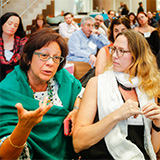
A Place for Dialogue
100%
3 Strategies
6 Tactics
= Learn how these tactics align with the United Nations Sustainable Development Goals